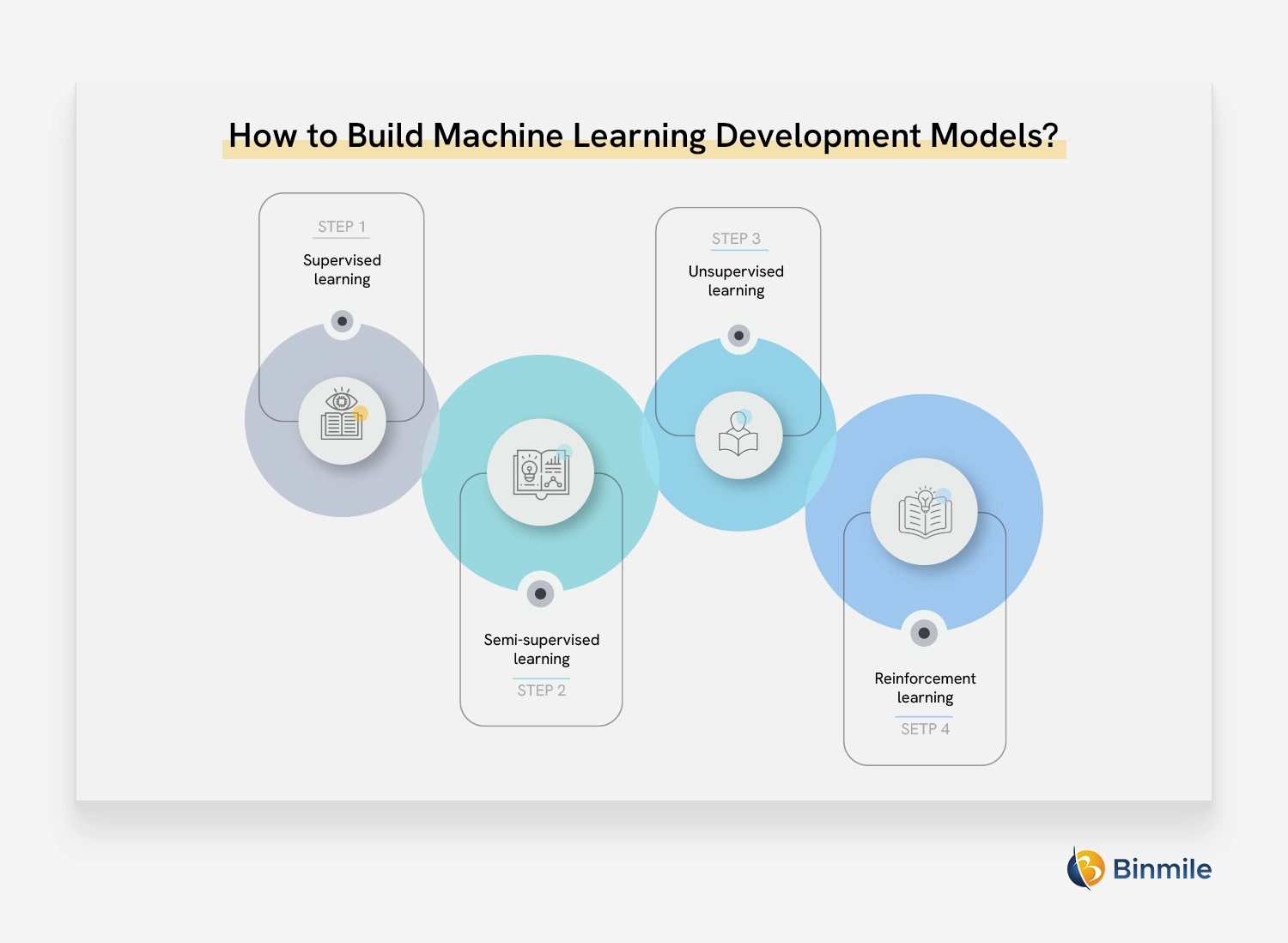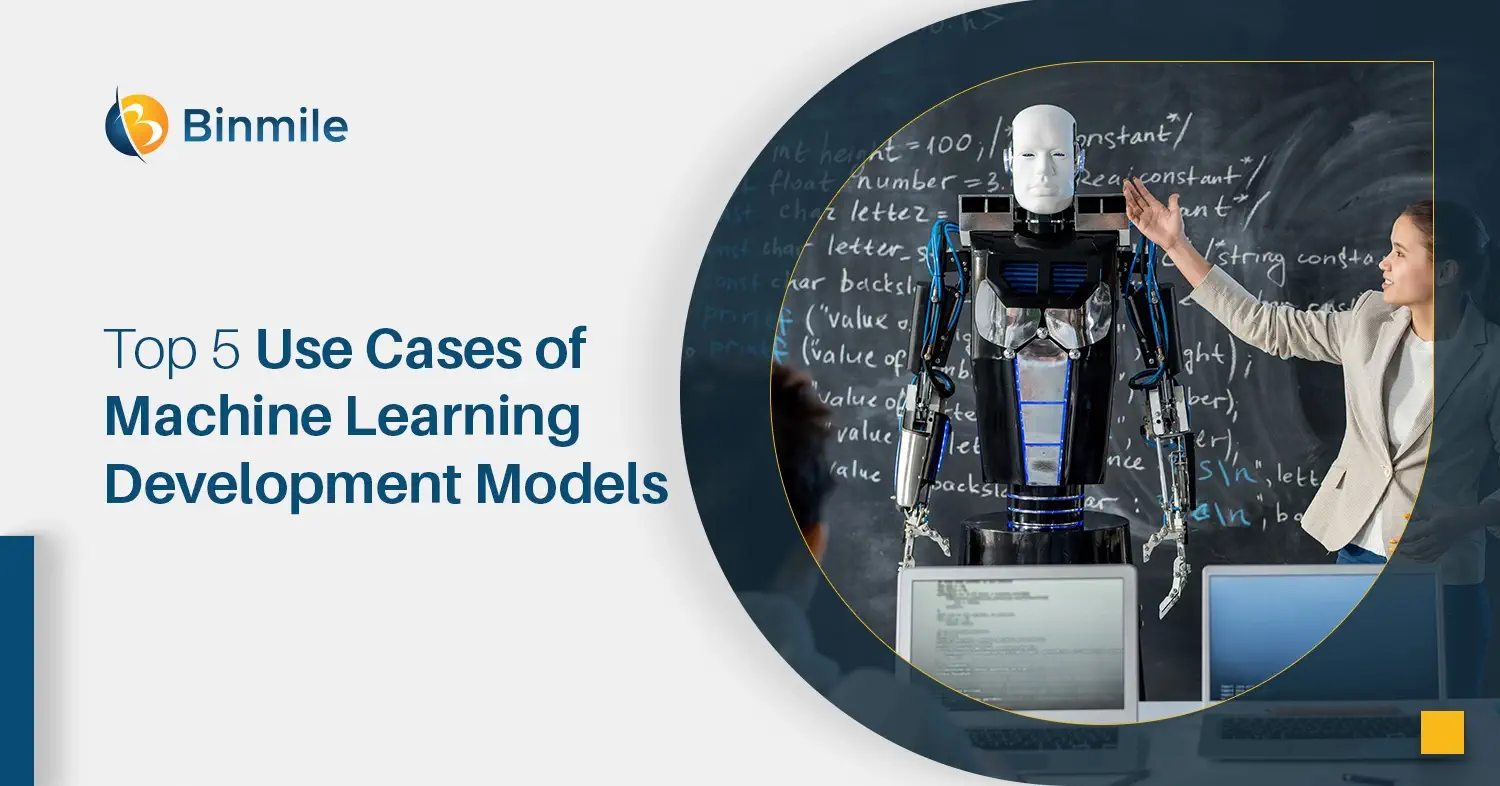The reliability of software has increased big time in the last few years. Take, for instance, some ML models, like ChatGPT. It uses deep learning technology, a subset of Machine Learning, to generate humanlike text within the blink of an eye. All you need to do is give it a prompt regarding what you want this software to do for you, like write a blog, email, or a social media caption for a specific event, and it will produce the desired material within a few seconds. Now the question comes, how does it provide the expected results? Well, ChatGPT taps transformer neural networks whose main job is to predict text, including the subsequent word, sentence, or paragraph depending on its training data’s actual sequence. This way the user gets the information they are looking for in the twinkle of an eye without investing hours in drafting a long article. Thus, it improves efficiency and productivity while reducing operational costs, making AI and ML-powered applications a game-changer in this era.
As a result, the usage of AI and ML models has increased to a great extent in different industries owing to their ability to produce impressive results in a short timeframe. Today, we will see the five most common use cases of ML-based models that are working wonders in multiple industries. But before that, let’s take a quick look at:
What are Machine Learning Development Models?
Machine Learning development models are advanced computer programs that are used to identify patterns in data or carry out predictions. Just to let you know, Machine Learning models are developed using Machine Learning algorithms, which go through a training process leveraging:
- Labeled data
- Unlabeled data
- Mixed data
Different Machine Learning algorithms are aligned with different goals, like classification or prediction modeling, ensuring that data scientists make use of different algorithms as the basis for different models. As data is fed into a specific algorithm, it is optimized to better handle a specific job and eventually, becomes handy ML models.
A case in point here is a decision tree, which is a simple algorithm for classification and prediction modeling. A data scientist trying to build a Machine Learning development model that recognizes various animal species might choose to train a decision tree algorithm with a myriad of animal pictures. As the days go by, the same algorithm will be altered by data and become perfect at classifying animal pictures, ultimately turning into successful machine learning development models.
As per a leading multicloud solution expert, 72% of the 1400+ respondents have said that AI and Machine Learning are part of their IT and business strategies in its AI and Machine Learning Research Report 2023. Apart from that, 69% of respondents treated AI/ML as a high priority technology who are likely to avail professional machine learning development services in the future.
Also, those who have already implemented this state-of-the-art technology claim taking its advantage to:
- Enhance existing processes (67%)
- Forecast business performance and industry trends (60%)
- Minimize risk (53%)
Now another riddle pops up that:
What is the Difference Between ML Models and ML Algorithms?
Although both terms are different, they are often used interchangeably. Machine Learning algorithms basically refer to programming procedures that are followed to fix an error or complete a task. On the other hand, machine learning development models are the outcome of the aforementioned procedures, which store the information and procedural guidelines to utilize that data to forecast new data.
How to Build Machine Learning Development Models?
ML models are built by training algorithms with labeled, unlabeled, or mixed data. Four primary Machine Learning algorithms that are commonly used in mobile app development services are:

1. Supervised Learning
Supervised learning takes place when an algorithm is trained with the help of “labeled data” or data that is tagged with a label, ensuring that an algorithm can easily learn from it. Training labels assist ML-based models in learning how to classify data in a manner that the researcher likes.
2. Semi-supervised Learning
Semi-supervised learning exploits a mixture of labeled and unlabeled data to train a specific algorithm. In such processes, the algorithm is first trained using a little amount of labeled data prior to being trained with a massive amount of unlabeled data.
3. Unsupervised Learning
As the name suggests, Unsupervised algorithms call on unlabeled data to train an algorithm. In such processes, the algorithm identifies patterns in the data itself and builds its own data clusters. As per some ML models experts, Unsupervised learning and pattern recognition are useful for researchers searching for patterns in data that they are currently unfamiliar with.
4. Reinforcement learning
Reinforcement learning is a Machine Learning tactic where usually positive and negative values are allocated to targeted and nontargeted actions. The main objective of applying this technique is to encourage programs to disregard the negative training examples and look for the positive ones, learning how to ramp up rewards using trial and error methods. According to a bunch of ML models specialists, Reinforcement learning can be leveraged to direct unsupervised Machine Learning.
What are the Different Types of ML Models?
There are two types of issues that are handled by Machine Learning:
- Classification
- Prediction
These troubles are addressed using models derived from algorithms designed for classification or regression. Sometimes, the same algorithm can be used to develop classification or regression models, based on how it has been trained.
Here you can see a list of famous algorithms used to build classification and regression ML models:
Classification Models
- Logistic regression
- Naive Bayes
- Decision trees
- Random forest
- K-nearest neighbor (KNN)
- Support vector machine
Regression Models
- Linear regression
- Ridge regression
- Decision trees
- Random forest
- K-nearest neighbor
- Neural network regression
Also Read: Role of AI & ML for Banking
Real-World Examples of Machine Learning Development Models
Although there are a multitude of applications of ML models, we have listed below five major ones as stated by a top software development companies.
1. Chatbots
A large number of the population have done direct interactions with Machine Learning models in the form of chatbots, whether during work hours or personal browsing. These advanced programs utilize technologies like Machine Learning and Natural Language Processing to imitate human conversation. They get rid of preprogrammed scripts to engage users and answer their queries by accessing the company’s database.
Initial versions of chatbots adhered to scripted rules that instructed bots what actions to take depending on given keywords. However, ML models allow chatbots to be more interactive and practical, making them more responsive to users’ needs, providing more accurate responses, and most importantly, delivering humanlike conversation. Some digital assistants are the best examples of chatbots as they offer the first point of contact for most consumer support centers today, like:
- Apple’s Siri
- Amazon’s Alexa
2. Dynamic Pricing
Machine Learning Development Models also enable companies to change the prices they charge for their products and services in real-time depending on growing or declining market demands, which is commonly known as “Dynamic Pricing.” Generally, companies observe consumer behavior and buying patterns to move the cost of their offerings up and down, which is a very important use of Machine Learning technology.
ML models generally rely on scores of data sets, like macro-economic and social media data to fix and adjust prices. Such models are often employed for:
- Airline tickets
- Hotel room rates
- Ride-sharing fares
Also, Uber’s Surge Pricing is the finest example of how entities reap benefits from ML algorithms to increase prices when demand goes up.
3. Recommendation Engines
Just so you know, recommendation engines are also powered by Machine Learning development models that are usually used in online retail and streaming services. Here, algorithms process data, like past purchases of consumers along with data about an entity’s existing inventory and other buyers’ purchasing history to learn about what products or services to suggest to specific consumers.
In short, recommendation engines allow agencies to personalize a buyer’s experience, which aids in customer retention and lets them boost sales by offering products and services that more precisely match what every purchaser desires. It is the job of those recommendation engines to analyze you and inform you about “People like you bought these things too,” so that you feel tempted to place an order for those things as well.
4. Fraud Detection
The next beneficial use of ML models in business is in fraud identification, especially in banking and financial services, where banks deploy them to alert people of possible fraudulent use of their debit and credit cards.
The ability of Machine Learning development models to understand patterns, and immediately see abnormalities that are different to those patterns, makes this technology a precious tool for identifying fraudulent activity. But:
How Does Fraud Detection Work?
Well, data scientists exploit Machine Learning to grasp an individual purchaser’s behavior, like when and where the customer taps a credit card. Machine Learning factors in that information along with other data to precisely decide in milliseconds which transactions seem normal and are therefore genuine and which transactions don’t seem normal and are therefore fake. Some of the biggest users of Machine Learning for fraud detection, apart from banking and financial institutions are:
- Travel institutions
- Gaming companies
- Retailers
5. Decision Support
The next thing you must be informed about is that many establishments also utilize ML models to help them take better plunges. Recently, a prominent multicloud expert asked respondents what benefits they expect to get from their ML and AI initiatives. You will be surprised to know that they prioritized enhanced innovation, reduced costs, and improved performance along with better decision-making.
The experts also highlighted a Decision Support System can help drive down costs and improve performance by making sure that workers make the optimal decisions. To ensure the best decision-making, ML algorithms are trained using historical and other imperative data sets, leading them to new information analysis and passage through several feasible scenarios at a scale and pace not possible for average humans to match. The algorithms then provide recommendations on the best plunge to take.
Exemplifying ML-Powered Decision Support Systems: Case Studies
A few cases in point of ML models-powered Decision Support Systems we must share with you are:
- Agriculture: In agriculture, ML-driven Decision Support Tools integrate data on climate, water, energy, resources, and other elements to provide guidance to farmers on their crop management decisions.
- Healthcare: In the healthcare department, a DSS can help doctors with patients’ diagnosis, reading and understanding medical imaging and diagnostics scans, and ultimately, creating relevant yet effective treatment options.
- Business Operations: In business operations, the aforementioned Decision Support System can assist management teams in predicting trends, discovering problems, and accelerating decisions. Besides all this, if you want to learn how to leverage machine learning in performance engineering, stay tuned for our new write-ups.
Concluding Remarks
The way Machine Learning algorithms are facilitating business decisions, improving reliability, and reducing cost, there is no denying the fact that the demand for ML models will increase sharply in different industries in the coming years.
If you are the one who wishes to develop machine learning app based on a Machine Learning model, it is always a smart decision to confer with ML experts of a top ML app development company. In case you want to improve your current ML model to enable it to fulfill your specific business requirements, then also you can give them a ring or shoot an email to them as soon as possible.










